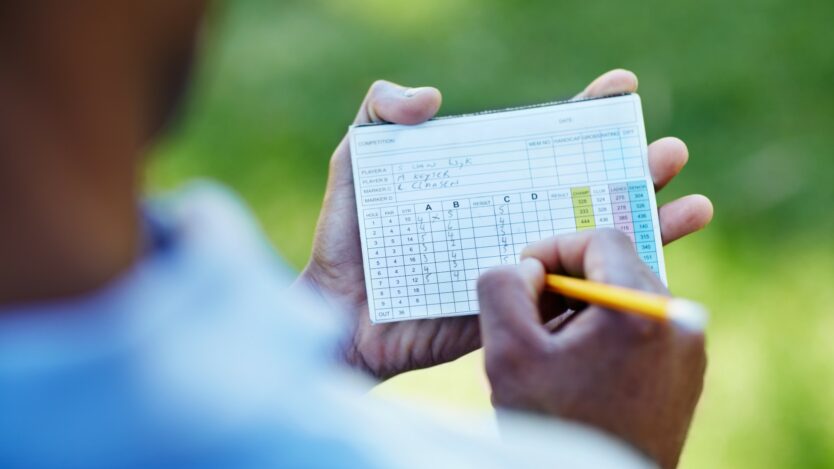If you’re running competitions, or are part of a handicap committee, here’s a quintet of new WHS rules you’ll need to know next year…
This article is part of GCMA Insights – topical content for golf industry professionals, discussing the things that matter to those who work in golf clubs.
It only arrived in 2020 but the World Handicap System is changing – and what’s coming is going to impact every golfer and club.
Just like the Rules of Golf, the Rules of Handicapping go through a four-year review and this is the first since WHS was launched.
While the R&A and USGA-led appraisal comes into effect in January in much of the world, we’ll have to wait a little longer in GB&I. Here, the changes will apply from April 1.
But that gives us plenty of time over the winter to get our heads around what’s coming. And to help, here’s a brief crib cheat of a quintet of the biggest developments…
Course Rating minus par will apply
Used by many other handicapping authorities in the rest of the world, Course Rating minus Par is an adjustment for the difference between the Course Rating and the Par of the course you are playing.
Simply, if the par is lower than the Course Rating players will receive additional shots on their Course Handicap. If the par is higher, they will lose strokes.
It will mean players now play to par, rather than the Course Rating, and it should also make mixed tee and mixed gender events much easier to calculate.
Get involved in the debate.
To join the GCMA, click here, or to organise a call with a member of the GCMA team, just complete the form below.
Par 3 and Academy courses can apply for Course Rating
In a move authorities hope will expand the opportunities for players to get handicaps, the minimum lengths an 18-hole and 9-hole course must be to be eligible for a WHS Course Rating has been halved.
They are now 1,500 yards for 18 and 750 yards for 9-holes, a move that will open possibilities for many short, academy and Par 3 courses.
It’s believed reducing the minimum yardages will encourage for junior, beginner, and golfers with disabilities to gain a handicapping and bridge the gap between starter golf and club membership.

Fourball betterball scores can count for handicap
A frequent bone of contention within clubs, and a headache for handicap committee chiefs, is how to deal with fourball betterball events. Lots of golfers complain these competitions can be dominated by players who may – for whatever reason – not participate as often in other contests.
Fourball betterball formats in competitions, such as stroke play, Stableford and Par/Bogey, will now be used for handicap purposes if a series of criteria are met.
These include one of the pair scoring on a minimum of 9-holes and the total score being at least 42 points.
WHY JOIN THE GCMA?
Membership of the GCMA unlocks a network of like-minded professionals, provides you with support in your professional and personal development, and provides you with a multitude of benefits. Whether that’s the tools that will help you to excel in your profession, or a wide range of services to support your wellbeing, signing up to the GCMA is joining a community.
Courses can standardise their pars if they wish
You all know the course with a hole that’s a par-4 from the back tees but a par-3 further forward. While some of you might embrace this quirk, it can be confusing for players and look awkward on the scorecard.
The new Rules of Handicapping will allow clubs to retain the same par for each gender and across all tee sets rated for that gender. That will be regardless of the yardage of each hole.
More tools for handicap committees
Golfers get emotional about their handicaps and club committees can sometimes feel uneasy, or find it difficult to decipher the clues from performances, when evaluating the indexes of their players.
But the role of the handicap committee is crucial to the success of the World Handicap System and the Rules recommend regular handicap reviews – and at least once a year to ensure a handicap index remained reflective of a player’s ability.
New reporting tools have been developed that will be incorporated into handicap software to help committees conduct that review process effectively and consistently.
This article is part of GCMA Insights – topical content for golf industry professionals, discussing the things that matter to those who work in golf clubs.
Get involved in the debate. To join the GCMA, click here, or to organise a call with a member of the GCMA team, just complete this form and we’ll be in touch!
Enquiries
"*" indicates required fields



